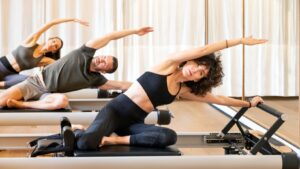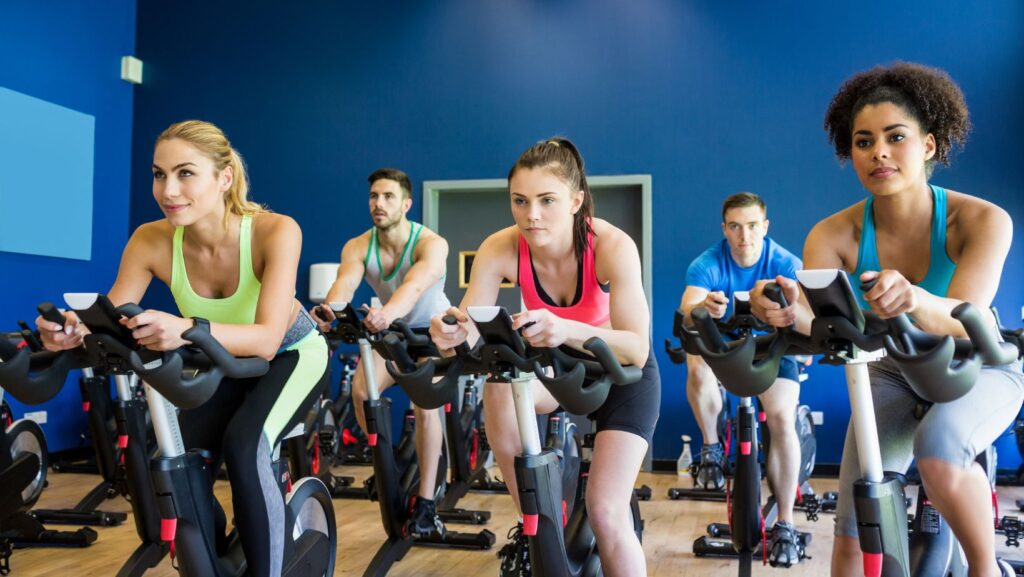Eco Fitness Pilates
At its core, eco fitness focuses on reducing the detrimental environmental costs typically associated with exercise. Instead of solely targeting physical health, eco fitness balances it with the well-being of our planet. It hinges on harnessing quality fitness equipment crafted from sustainable materials, such as recycled rubber or plant-based foam. Precisely, it’s about engaging in exercise routines while endorsing an advocate behavioral change towards sustainability. Eco fitness plays a significant role in modern Pilates. It drives the creation of eco-conscious Pilates studios that uphold energy-efficiency and waste reduction. For example, some Pilates businesses provide customers with cork blocks and latex-free mats, developed from repurposed or natural components. Moreover, eco fitness in Pilates supports the installation of energy-saving lighting and temperature systems. Thus, while individuals strive for physical strength and flexibility, they are also assisting in the conservation of natural resources, thereby promoting a healthier planet.
Pilates, at its core, represents a form of exercise focused on controlled movements, maximizing energy efficiency, and minimizing waste. Participants merely require a mat and ample space, making it an exercise modality that can be practiced virtually anywhere, without excessive energy consumption or the need for high-tech equipment. Leading studios, such as those adhering to eco fitness principles, often use eco-friendly materials, such as recycled or renewable rubber for mats and foam blocks, signifying Pilates’ alignment with sustainable fitness practices. Pilates encourages eco fitness via a multitude of avenues. These include, but aren’t limited to, conscious energy usage, fostering a sense of community, and promoting a holistic approach to health. Specific Pilates studios implement technology to maximize energy efficiency, like kinetic energy-powered machines. Additionally, these studios prioritize communal involvement and provide educational sessions focusing on environmental awareness, encouraging practitioners to adopt eco-friendly habits outside the studio. Moreover, the holistic approach promoted by Pilates, which emphasizes balance, strength, and flexibility, mirrors the mentality of eco fitness, which seeks to balance personal fitness and sustainability for a healthier planet. The implementation of these practices underlines how Pilates aligns with, and indeed, encourages a move towards eco fitness.
Key Benefits of Eco Fitness Pilates
Appreciating the key benefits of Eco Fitness Pilates involves diving into its unique charms that cater to both physical health and environmental sustainability. Eco Fitness Pilates benefits an individual’s physical health in several distinct ways. Primarily, it helps increase body strength, flexibility, and balance, contributing to a well-rounded fitness regime.  Compared to traditional gym workouts, Pilates focuses on full-body fitness. For instance, regular Pilates practice can lead to improved posture, musculoskeletal alignment, and reduced back pain. Additionally, it promotes mental health through calming routines and mind-body coordination exercises.
Compared to traditional gym workouts, Pilates focuses on full-body fitness. For instance, regular Pilates practice can lead to improved posture, musculoskeletal alignment, and reduced back pain. Additionally, it promotes mental health through calming routines and mind-body coordination exercises.
Eco Fitness Pilates exhibits a clear commitment to environmental sustainability. This practice requires only a mat and the human body, eliminating the reliance on electricity-draining equipment. Many Pilates studios have also adopted eco-friendly approaches, such as installing solar panels, using natural light, and opting for recycled or sustainable materials. Moreover, integrating outdoor sessions, an integral part of eco fitness, can have a direct positive impact on nature conservation. Here, natural elements like gravity and wind resistance replace artificial resistance machines, reducing the carbon footprint. In essence, it encourages a sustainable lifestyle not only in fitness practices but also in wider life perspectives.
How to Start your Journey with Eco Fitness Pilates
Venturing into eco fitness Pilates presents an opportunity to integrate personal health and environmental sustainability. It’s not simply a fitness routine, but a gentle leap towards a greener lifestyle. Selecting a suitable eco fitness Pilates class necessitates a discerning eye and careful considerations. Firstly, a potential Pilates participant should ensure that the class incorporates eco-friendly practices. Instructors might, for example, incorporate outdoor sessions to lower the carbon footprint, making use of natural light and open space.  Secondly, they’d appreciate a class demonstrating a deep grasp of traditional Pilates’ principles such as concentration, control, precision, breathing, and flow. Lastly, an eco fitness Pilates should have an emphasis on using minimal equipment, further reducing environmental impact.
Secondly, they’d appreciate a class demonstrating a deep grasp of traditional Pilates’ principles such as concentration, control, precision, breathing, and flow. Lastly, an eco fitness Pilates should have an emphasis on using minimal equipment, further reducing environmental impact.
Even though eco fitness Pilates often prioritizes using minimal equipment, certain tools help to enhance the efficiency of the workout. Typically, a Pilates mat made from eco-friendly materials like natural rubber, organic cotton, or jute becomes a crucial asset. It provides support during various poses and sequences. Additionally, resistance bands manufactured from sustainable materials – such as natural latex – are popular additions for deeper muscle engagement. Overall, every piece of equipment selected should mirror the ethos of eco fitness Pilates: it benefits the user’s health without causing undue harm to the environment.




